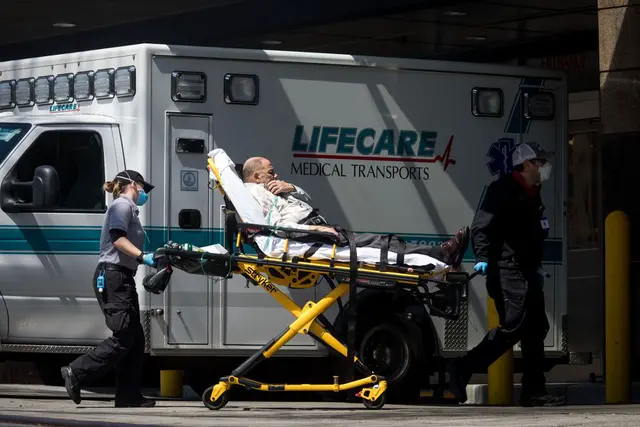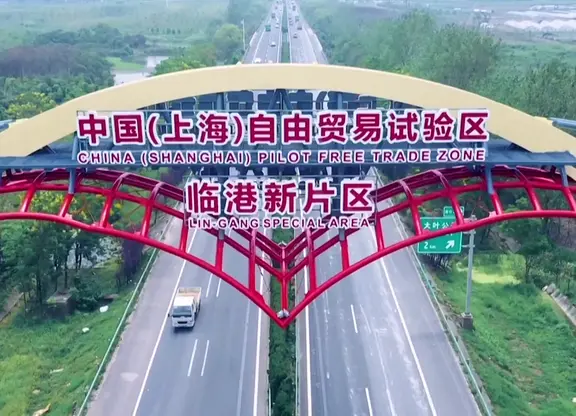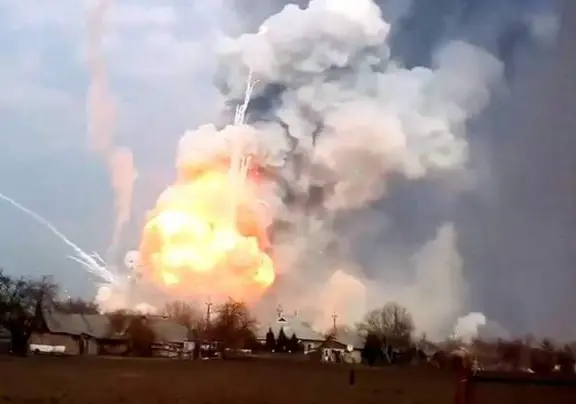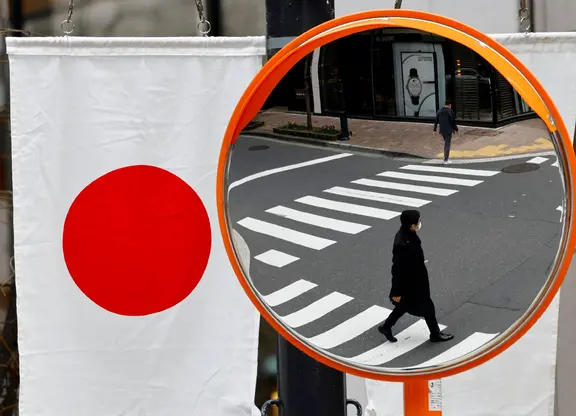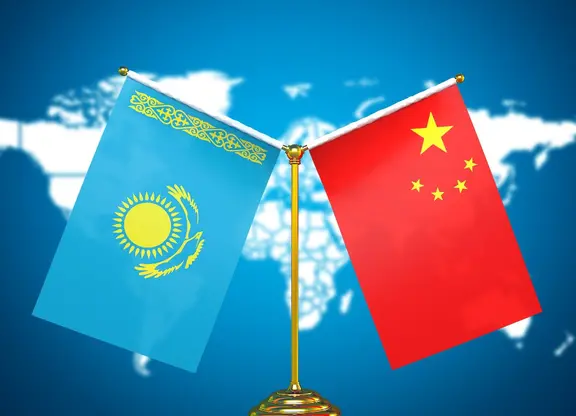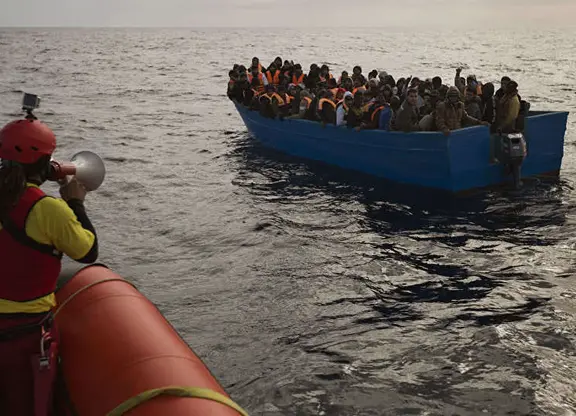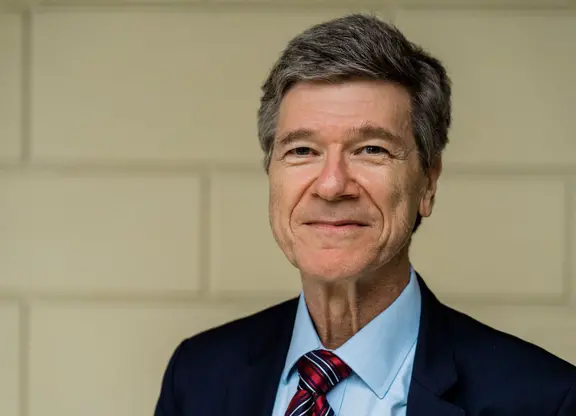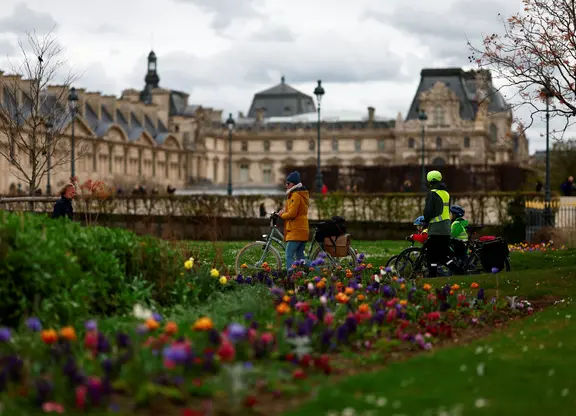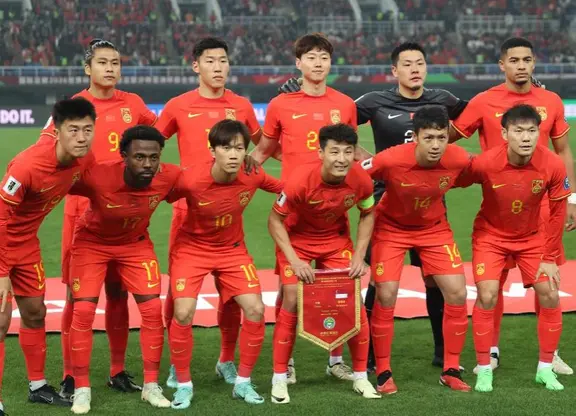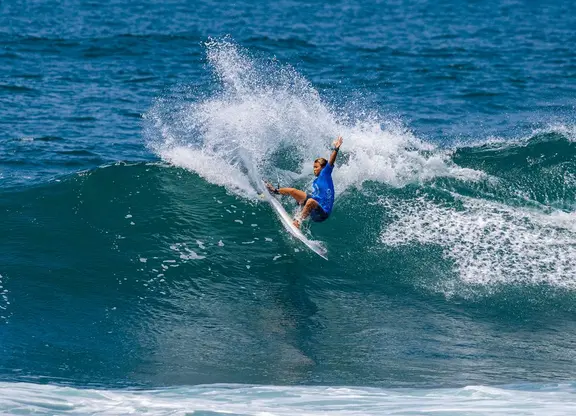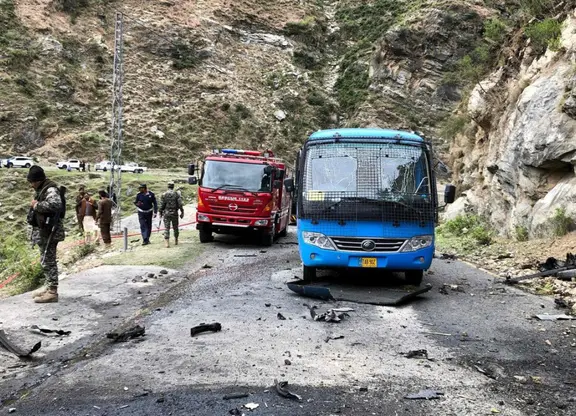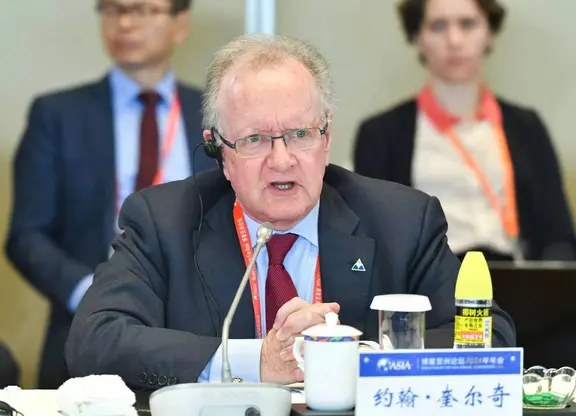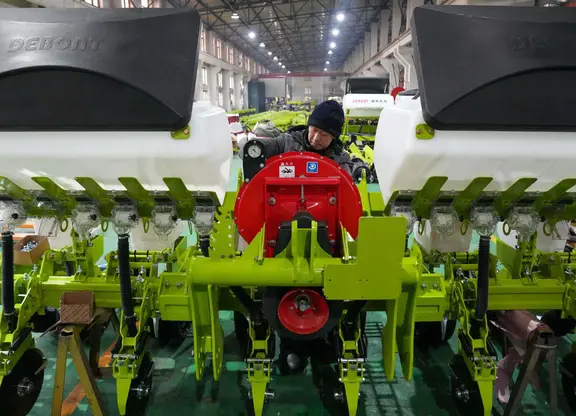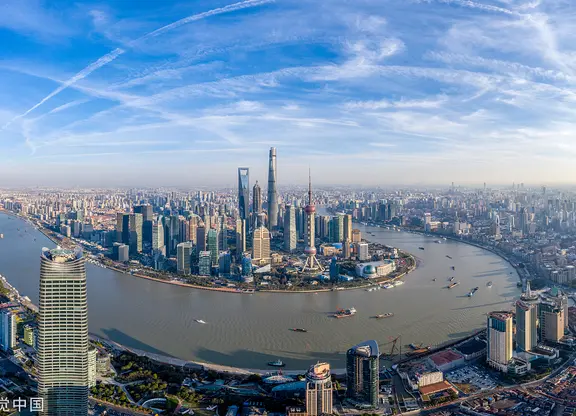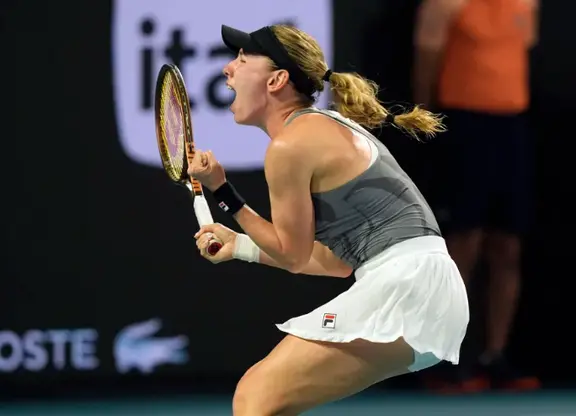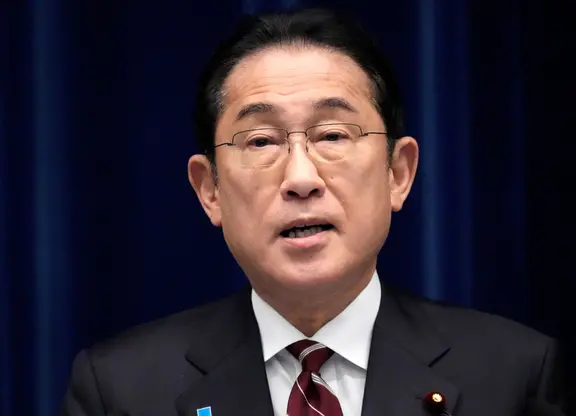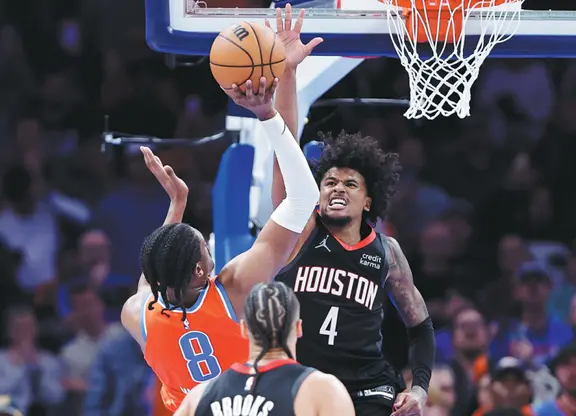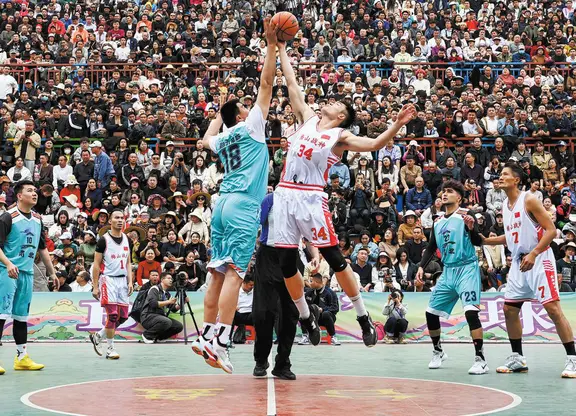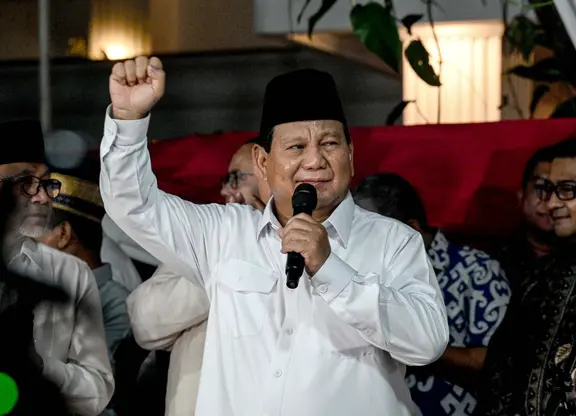Video: New York Governor Andrew Cuomotells his daily press briefing on May 20, 2020, thatthe Bronx borough, where a majority of residents are African Americans and Latino Americans, has the highest COVID-19 positive rate of 34 percent, compared with a citywide average of 19.9 percent. (Xinhua/Zhang Mocheng)
The highest rate was recorded in Morrisania, The Bronx, where 43 percent of residents tested positive for COVID-19 antibodies. The other nine neighborhoods all had a positive rate of over 33 percent.
NEW YORK, May 20 (Xinhua) -- New York City's deep-rooted wealth and racial disparities have been shown in the pattern of the COVID-19 spread, as people in lower-income neighborhoods and communities of color are suffering the most, according to city and state data.
According to preliminary results of antibody tests of some 8,000 people in New York City, The Bronx borough, where a majority of residents are African Americans and Latino Americans, has the highest COVID-19 positive rate of 34 percent, compared with a citywide average of 19.9 percent, New York Governor Andrew Cuomo said at Wednesday's briefing.
Ranking by zip codes, the top ten highest-infected neighborhoods are located in the boroughs of The Bronx, Brooklyn and Queens, home to most of the city's minority groups.
Healthcare workers wheel a patient into the emergency room of BronxCare Hospital Center in the Bronx borough of New York, the United States, April 11, 2020. (Photo by Michael Nagle/Xinhua)
The highest rate was recorded in Morrisania, The Bronx, where 43 percent of residents tested positive for COVID-19 antibodies. The other nine neighborhoods all had a positive rate of over 33 percent.
Moreover, the spread is continuing in those communities, and "that's where the new cases are coming from," said Cuomo.
To combat the disparities, Cuomo said the state will partner with the state's largest health care provider Northwell Health to double church-based testing sites to 44 locations in those hardest-hit neighborhoods.
The state will also expand testing capacity in 40 locations of New York City public housing facilities, where social distancing is hard to maintain due to limited room space.
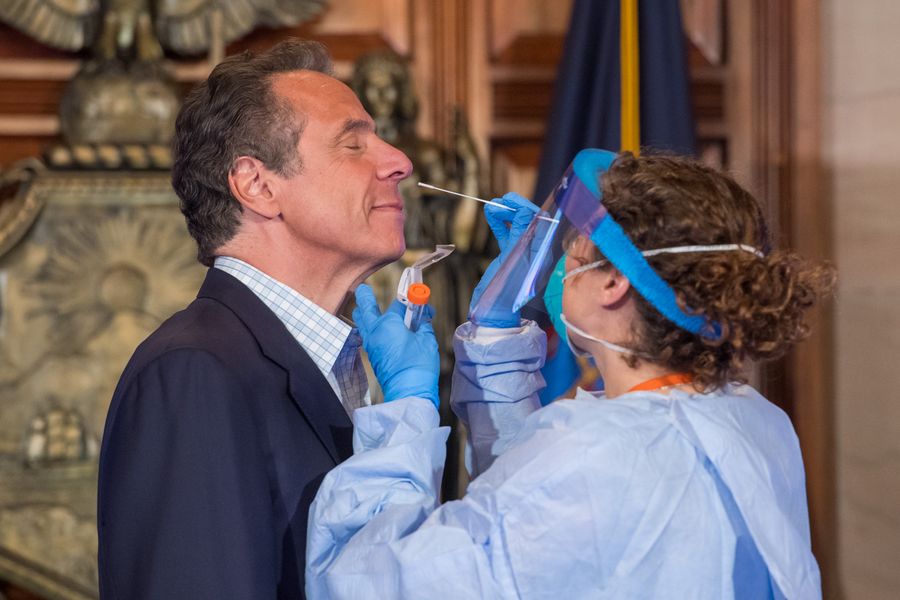
New York State Governor Andrew Cuomo (L) demonstrates how to get a COVID-19 test during a daily COVID-19 press briefing in Albany of New York State, the United States, on May 17, 2020. (Darren McGee/Office of Governor Andrew M. Cuomo/Handout via Xinhua)
One more region of the state, the Capitol Region, stepped into phase one of reopening on Wednesday, leaving downstate regions -- New York City, Long Island and Mid-Hudson -- the only regions that are not qualified for reopening yet.
Meanwhile, statewide religious gathering with up to 10 people will be allowed as of Thursday, said Cuomo, who added that participants should wear masks and practice social distancing.
It came one day after the governor announced that Memorial Day ceremonies with the same scale will be permitted next week in the state.
"I understand their desire to get to religious ceremonies as soon as possible," said Cuomo. "But we need to find out how to do it and do it safely and do it smartly."
New York has reported more than 354,000 COVID-19 cases and over 28,000 deaths, still the most-suffering state in the country, according to data compiled by Johns Hopkins University.
 简体中文
简体中文

